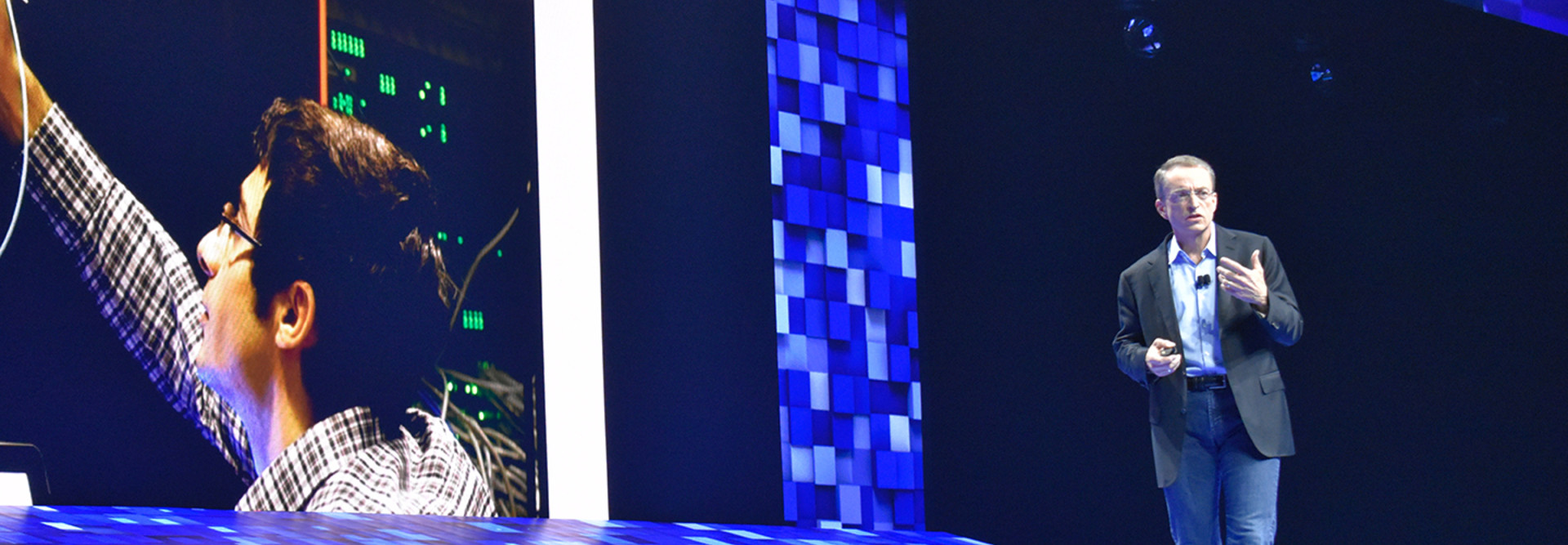VMworld 2018: VMware Embeds Security into Its Virtualization Platform
For IT administrators who want to bolster security for applications in hybrid cloud environments, VMware is rising to the challenge. The company unveiled vSphere Platinum Edition, a new version of its cloud computing virtualization platform infused with security features to enhance the security of apps and infrastructure.
Plus, VMware is updating its vSAN software platform for hyperconverged infrastructure to make it easier for IT admins to deploy HCI.
Those were just two of the advancements VMware rolled out amid a flurry of announcements on the opening day of the VMworld 2018 conference in Las Vegas on Aug. 27.
VMware Brings AppDefense Security Features to vSphere
VMware CEO Pat Gelsinger observed during the keynote that “security is broken today,” in that the IT industry is still largely bolting on security solutions, chasing the bad instead of ensuring the good. VMware wants to help usher in a world of “fewer security products and much more security,” he said. “We’re not chasing threats or adding on, but radically reducing the attack surface.”
In announcing the new platform, VMware described vSphere Platinum Edition as designed to “deliver comprehensive, intrinsic security to protect applications, infrastructure, data and access across customers’ digital foundations.”
Critically, VMware is combining the native security features of vSphere with AppDefense, which the company announced at VMworld last year. AppDefense uses virtual infrastructure to monitor apps, ensure they are running as they are supposed to, and then respond as necessary if they are not.
What is AppDefense?
As BizTech reported last year:
The service sees which apps are running in cloud environments, as well as all virtual machines used to run the apps, and uses machine learning to detect their “intent,” or what they are supposed to be doing. It then monitors what is actually running to see if it matches what is supposed to be happening and detects anomalies in real time. If the app is not doing what it is supposed to do, the service can then respond by reimaging or quarantining the VMs, or perform whatever incident response a company wants to deploy.
“Imagine a system that can look into the applications, and understand their behavior and how they should operate,” Gelsinger said. The AppDefense system locks down the app’s behavior so that the system consistently looks as it should.
“We want you to be able to leverage AppDefense everywhere, and that’s why we’re building it into vSphere,” Gelsinger said. “Who would possibly run a virtual machine in the future without turning security on? That’s how we want this to work.”
Learn how to maximize the benefits of cloud architectures.
VMware says vSphere Platinum Edition will use machine learning and behavioral analytics, allowing admins to boost security by enabling virtual machines to run in a “known good” state.
By monitoring app behavior in real time and detecting anomalies that differ from the known good state, vSphere admins and security teams will be able to better collaborate to protect systems, VMware argues.
VMware Eases HCI Adoption with New vSAN 6.7 Update 1
Hyperconverged infrastructure platforms combine computing, storage, networking and virtualization capabilities into a single appliance, but more important, all of the components are preintegrated and controlled by one software management layer.
HCI’s popularity is undisputed: Revenue from the sale of HCI systems grew 76 percent year over year during the first quarter, totaling $1.2 billion in sales and accounting for 38 percent of the total converged systems market, IDC reported in June.
In May, SMB and channel market research firm TechAisle reported that, based on its survey data, 18 percent of midmarket firms are currently using HCI, and that another 46 percent are actively investigating and planning to adopt the technology. Among upper midmarket companies (those with 500 to 999 employees), 45 percent currently use HCI and 38 percent are planning to adopt.
VMware was the top provider of HCI software in the first quarter, according to IDC, followed by Nutanix, Hewlett Packard Enterprise and Cisco Systems (going by the brand of the hyperconverged solution, Dell EMC was the top vendor, followed by Nutanix, HPE and Cisco).
Against that backdrop, VMware announced a new release of vSAN to make it easier for organizations to deploy hyperconverged infrastructure. The update promises “simplified operations, efficient infrastructure and rapid support resolution.”
The new release will reduce time spent on maintenance with built-in intelligence capabilities, according to VMware, and enable IT admins to spin up new HCI clusters faster than before. VMware is supporting this with a Quick Start guided cluster creation and extension wizard that guides admins through the deployment process for both vSAN and non-vSAN clusters.
The update will also decrease the time it takes for admins to resolve any issues they encounter by providing granular diagnostic tools and historical data to better support HCI environments, VMware says.
Additionally, VMware is launching a new private beta program for vSAN to gather feedback on how it can further simplify the data center through native data protection, file services, and cloud-native storage capabilities. To request access to the private beta, users should visit vmware.com/go/vsan-beta to complete a customer questionnaire.
Read more articles and check out videos from BizTech’s coverage of VMworld 2018 here.










